Amherst History Month By Month: Amherst Center. Shops, Offices, Restaurants, Businesses, Part 1. From Laundries To Restaurants
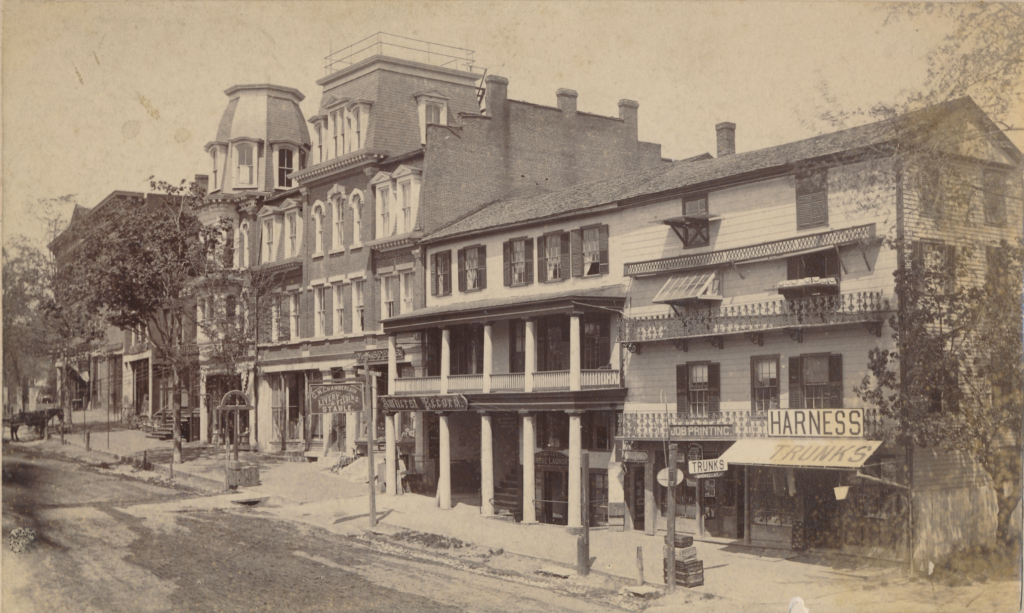
Main Street, Amherst, showing the north side of the street that included the American House block. Photograph by John L. Lovell, #0304, Courtesy of Special Collections, Jones Library, MA. Special thanks to Katherine Whitcombe, Co-director of Special Collections for her assistance in the research for this month's column.
This column is about preservation but the built environment and its history seems to me sustained so much by language and/or food pathways, which are a kind of glue that helps support our historic town center, and where thanks are especially due because of the impact of our more recent immigrant communities. I am going to ask for your indulgence as I get into the topic this month by looking at these potent markers of identity in our downtown architecture.
It’s 1968. I am in New York’s Chinatown with my little brother and my mum and dad. Manhattan has captured our hearts in the season between Christmas and New Year. It is dark, snowy, and cold; we walk through narrow streets to dinner, talking with hawkers and vendors along the way, and we eat in a Chinese restaurant, recommended at our hotel (the Chelsea hotel, no less), that has a large aquarium by our table full of inky lobsters, glittering fish, and neon lights. A great night out, recalled from 50 years ago before we all returned to London. Older now, here I am, in Amherst, ordering comfort food with my sons at Lili’s Restaurant, known for its homestyle cuisine from the ancient city of Xi’an (famous for its tombs) and its fragrant, spicy/sour foods from surrounding Shaanxi province, where Lili (Lili Jia) grew up. Xi’an is mostly Han Chinese with a Hui minority in the historic Muslim district of the city.
Amherst doesn’t have a Chinatown or distinct areas that are historically linked to migration pathways (like Korean or Japan Towns in San Francisco) but it has an excellent array of Chinese, Tibetan, Vietnamese, Thai, Japanese, and other Asian-American restaurants. They are all small, independent businesses, not the larger kind of regional chains that you might find out on Route 9. It’s a reason I moved here, prompted by memories of family Christmases at Formosa or Oriental Flavor looking out at the twinkly lights of the Merry Maple. It has also made me curious to learn more about Amherst’s first Asian-Americans.
While we wait for our food at Lili’s, I chat with Mr. Lili (Naitan Wang) about cooking without nuts and nut oils. These folks have honed their menu for their demographic. We order hand-pulled noodles and pork dumplings with fiddleheads. We see Lili at work and chat with her when we pick up our order. “[Lili] came to the United States about 23 years ago. She would cook at home, to the delight of a friend who told her the food was so good, she should start a restaurant. In early 2017, when her children had grown, she opened the kitchen and small dining room in the heart of Amherst.” [
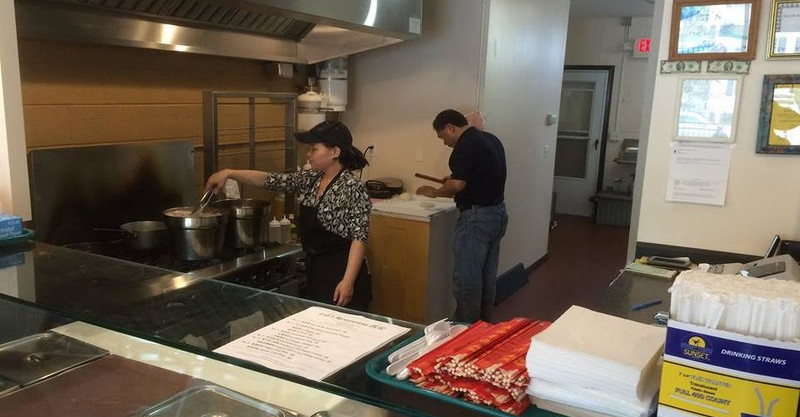
Like them, I’m an immigrant to this country, but I know their story is more challenging than mine. Being Chinese-American in Amherst has meant living in two cultures, two languages, two distinct food cultures. When they opened their restaurant on East Pleasant Street, Amherst Town Meeting had only recently inaugurated a Race Amity day, in 2015. It has become an important event, one co-sponsored by Citizens for Racial Amity Now!, Amherst’s Baha’i Community, Interfaith Opportunities Network (ION), and the Amherst League of Women Voters. The event was the idea of Raymond Elliott, who envisioned an annual “celebration of the Oneness of the Human Family” and asked the community to join in a celebration at the Town Hall steps and on the Commons. Such events are an important part of our town identity. This year the event is on Sunday, June 11.
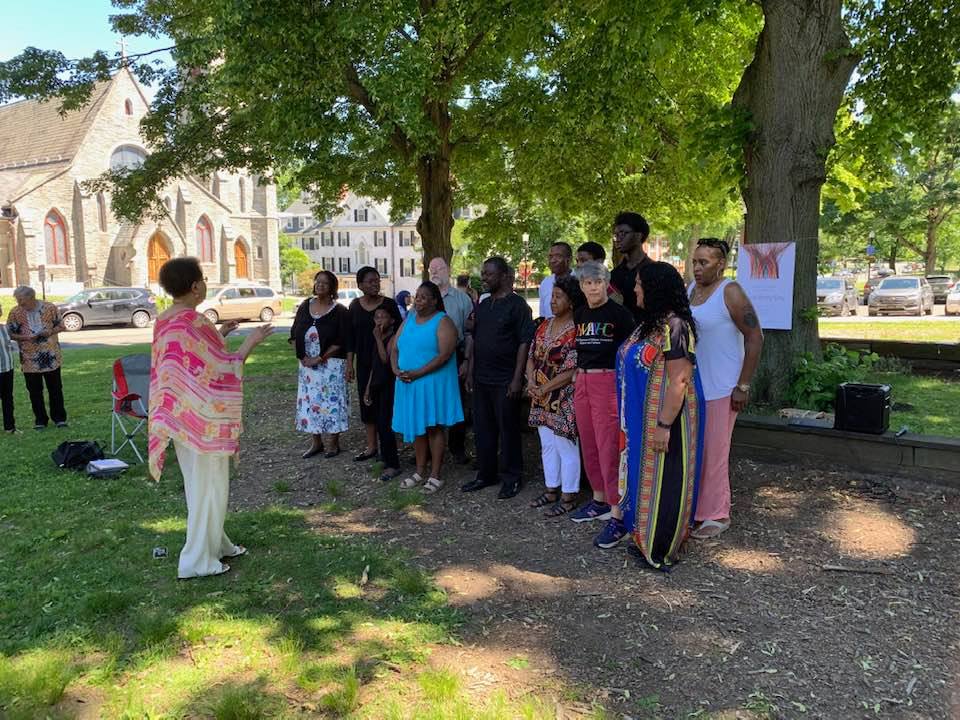
Getting back to my search for the Chinese immigrant community in Amherst, I find a photograph on display at the Amherst History Museum. It shows a view of the top end of Main Street by John. L. Lowell, a photographer who worked for the newspaper called the Amherst Record. His own photographic studio was located here and the newspaper offices for the Amherst Record were in a separate building at the back of what was known as the American House block. In the spaces between the two white columns counting from the right, it is possible (with an Agfa Loupe magnifier) to see the sign for the Lee Sing Chinese Laundry.

Chinese laundries began to pop up in California in the 1850s at a time when whites barred most occupations to Chinese immigrants. Boston had one by 1875, owned by Wah Lee and Co. According to a 2021 article in Sampan, a bilingual Chinese and English newspaper in Boston, “[L]aundry work, which was done by hand, was laborious and time-consuming, so not many whites wanted to do such work. In addition, crowded housing conditions made it more difficult for people to do their own laundry. Chinese people, faced with little initial competition, quickly turned laundry services into a widespread industry.” It was hard work for the proprietors with no days off, especially if they expanded a laundry with a variety store. “By 1913, there were about 3,000 Chinese in the greater Boston area, and about half were in the laundry business. A business directory compiled by Wong Kin in 1913 lists almost 200 Chinese laundries in Massachusetts, including about 100 in Boston, and nearly 100 more in other cities and towns in Massachusetts.”
Amherst’s laundry proprietor, Sing Lee, who had an assistant by the 1880s, posted advertisements in the area declaring that “Collars, cuffs, etc [are] cleaned expeditiously and with care.” He relocated a few times, first to the basement of the Palmer Block (now the site of Town Hall) and then in 1919 to the Judges Block on Main Street.
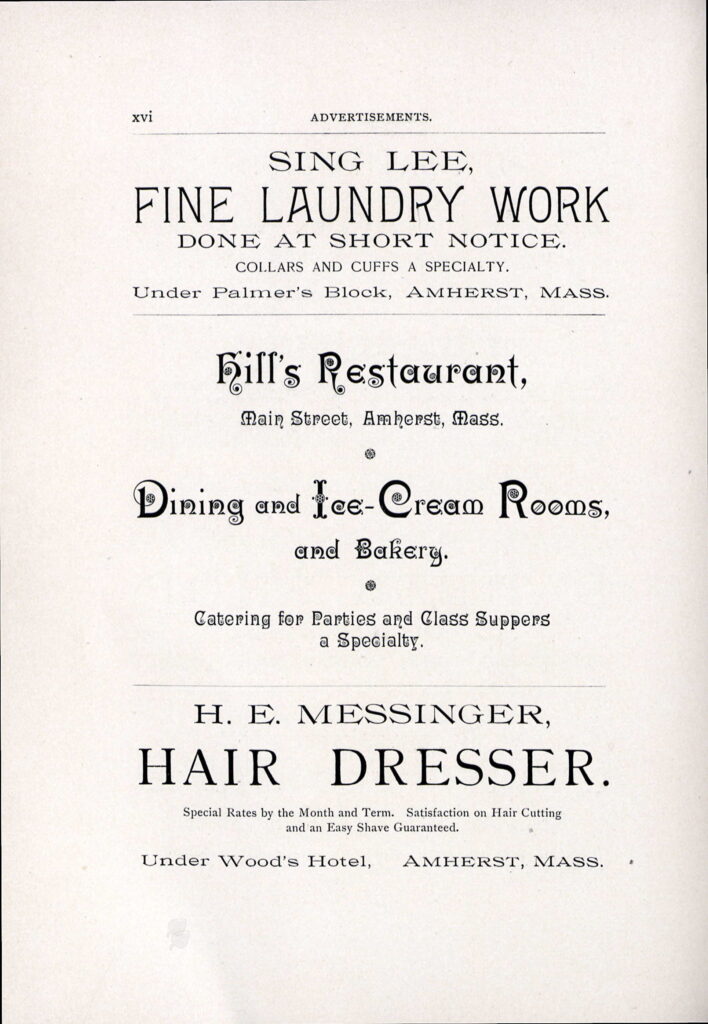
Capturing snippets of photographic and demographic data help to begin forming an impression of what life might have been like for the first Chinese in Amherst. It was particularly difficult in around 1882, when, during a period of racist hysteria, the Chinese Exclusion Act declared that Chinese immigrants could not become citizens, as had been the case since 1873. Someone has made this topic their life’s work and his name is Professor Richard T. Chu, Five College associate professor in the history department at UMass Amherst. Since the early noughts, he has been teaching and conducting oral history projects in Springfield and Amherst as part of his course “Asian-Pacific American History, 1850-present” (History 253). One of his goals is to make sure elders are interviewed. He has also been committed to making sure that distinctions between, say, Bhutanese and Cambodian populations in this area, are preserved within the oral history data. We have just been celebrating Asian American and Pacific Islander month in May but it includes people from hundreds of countries. Perhaps with time, this kind of celebration will become more informed by history on the ground.
See: https://umasshistory.wordpress.com/2019/12/10/__trashed/
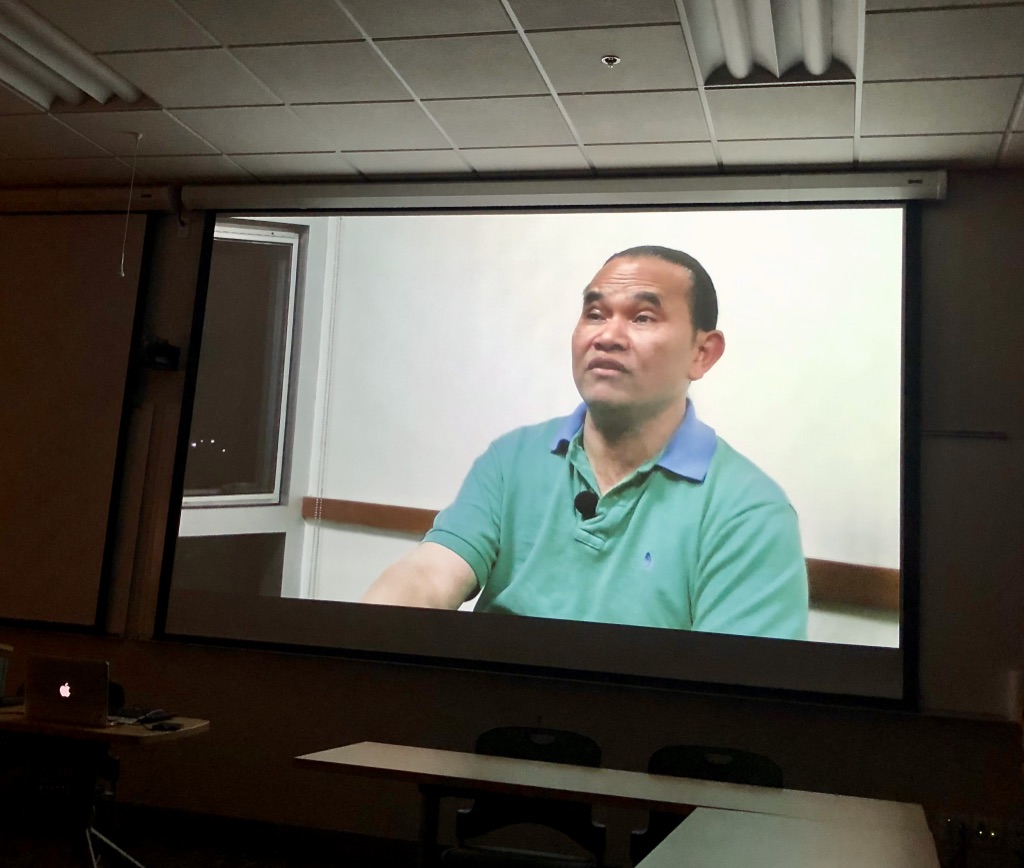
To get a sense of how ownership of downtown property changes hands over time, this article contains a snapshot of a building in Amherst Center from about 1825 to 2009. See:
https://www.digitalamherst.org/exhibits/show/business_industry/unsung-phoenix
Remarkably, despite blizzards and fires that historically often engulfed our town center in the 1800s, it is significant that much of the Victorian center of brick commercial structures remains. It is in our best interests to get second-floor office space leased or rented here so that our downtown continues to be lively and vibrant. Arguably it is often our immigrant communities — as homeowners or business owners — who have done the most to preserve the vitality and living culture of the Valley’s cities and towns.
